Yellow tap water can be a worrying sight especially since water serves critical human needs.
The primary reason for yellow coloration in tap water is rusty iron pipes. Iron pipes corrode and form rust over time due to oxidation. As water flows through the pipes, it gets contaminated by the rust yellow pigmentation.
Rusty water heater, a change in water source and burst pipes are other common reasons why your tap water is yellow. Here’s a tabular view of common causes and their solution:
| Yellow Tap Water | Solution |
|---|---|
| Rusty pipes | Replace pipes AND install a whole house filter system (We recommend the Springwell whole house filter for tap water OR the Springwell iron filter for well water) |
| Rusty water heater | Flush your water heater OR replace the heater if its more than 10 years old |
| Municipal water authority conducting pipe maintenance | Contact your water supplier/authority for help |
| Change in water source | Contact your water supplier/authority for help |
| Bursted pipes | Find and seal up bursted pipes |
| Corroded faucets | Flush the faucets with high pressure water OR clean the faucets with undiluted white vinegar OR completely replace the faucets |
| Fire hydrant use | Let taps run for about 20 mins after fire hydrant use |
Why Is My Water Yellow All of a Sudden?
Your water is suddenly yellow because of:
- Rusty pipes
- Rusty water heater
- Change in water source
- Pipe maintenance
- Burst pipes
- Fire hydrant use
- Corroded faucets
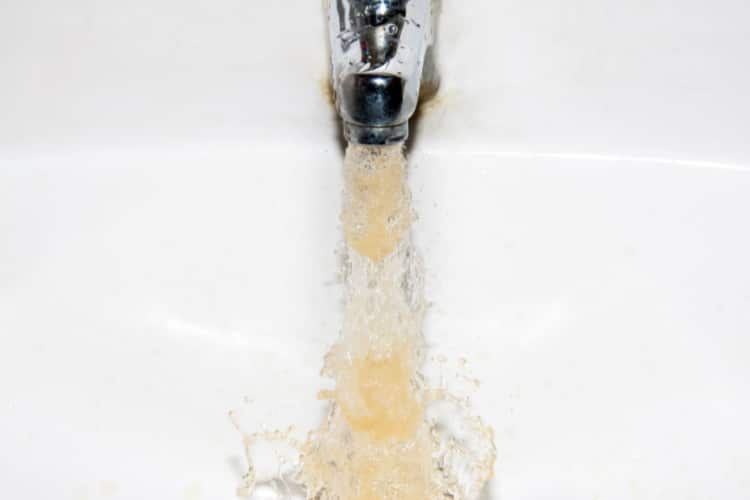
1. Rusty Pipes Can Cause Yellow Tap Water
Yellow rust in pipes, also known as iron oxide-hydroxide, is the most common reason for yellow water thanks to its solubility in water. Asides its solubility, rust sediments also affects the water color by accumulating and corroding the inner lining of pipes.
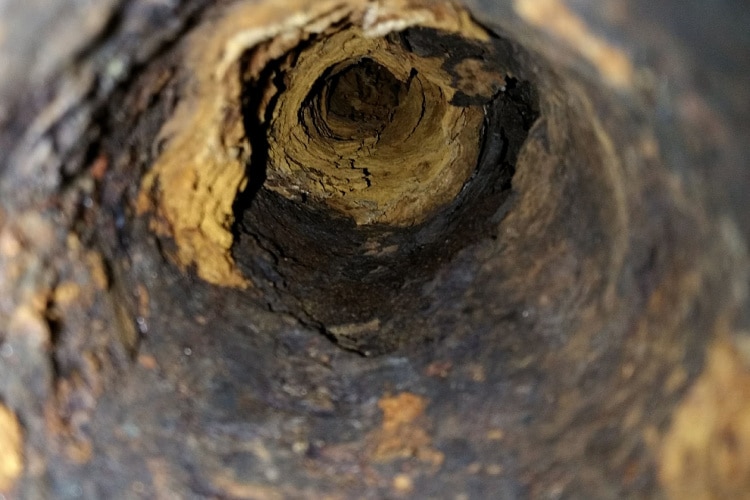
Therefore, if iron, lead, or copper was used in the plumbing of your house, it’s likely to corrode and discolor the water over time. This happens by means of iron coming in contact with oxygen in water to react and form rust.
Unlike rust formed in everyday appliances, the rust in plumbing pipes has a deep yellow pigmentation. The deep yellow color is actually a consequence of oxidation in a high-moisture environment such as the inner lining of pipes. In a nutshell, the darker the yellow water is, the rustier your pipes are.
Solution to rusty pipes causing yellow water
The best solution to rusty pipes is to replace them with new ones. Although expensive, it is the best way to ensure that there’ll be no rust-related problems in the future.
Alongside changing the pipes, we also advice you to install a whole house filter system to remove the residue sediments in water. We recommend the Springwell whole house filter for this purpose.
2. Rusty Water Heater Can Cause Yellow Coloration in Water
While most water heaters are designed to resist rust, they can also corrode if not properly maintained. The reason why water heaters are rust-resistant is because they have a sacrificial anode rod that prevents the rest of the tank from rusting. This anode rod plays a “sacrificial” role by oxidizing itself so the rest of the tank can be rust-free.
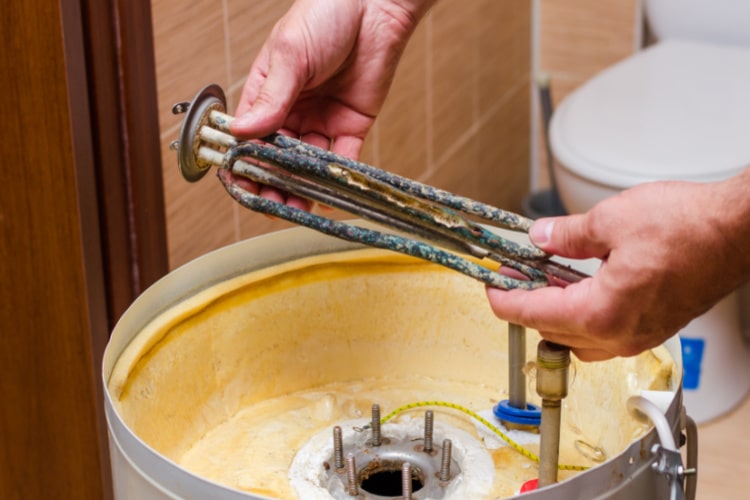
If you notice a yellow tinge in hot tap water, it means that the tank has accumulated rust from the inside.
Solution to rusty water heater:
The best way to fix a rusty water heater is to flush it. Make sure to flush it thoroughly through the drain valve and drain all the water-carrying sediments.
Next, check the sacrificial anode rod to determine whether it’s rusty. If it is, call a plumber to replace it.
However, note that flushing and replacing the sacrificial anode rod might not help much if the water heater is over ten years as the problem is likely to re-occur after a few days. If your water heater is older than ten years, it’s best to buy a new one.
3. Frequent Pipe Maintenance Can Contaminate Water
Maintaining plumbing pipes ensures a consistent supply of clean water, and your local water supplier will likely conduct pipe maintenance at some point. During this process, they may flush the pipes which in turn allows rust and pollutants to find their way into your tap water.
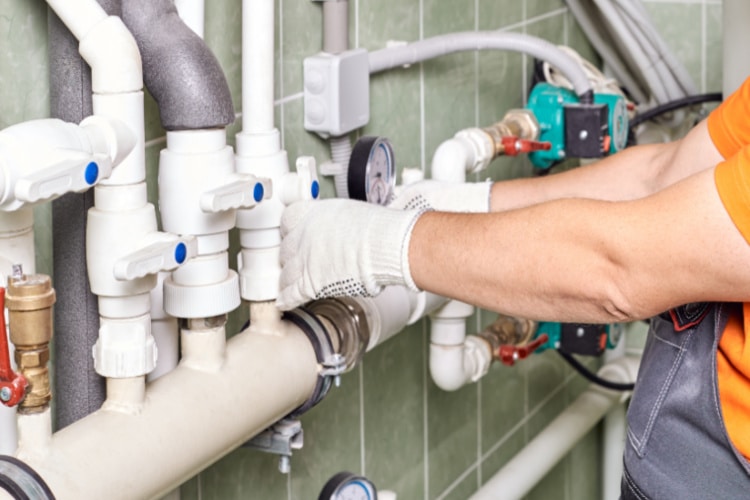
Sudden increase in water pressure is a sign the main water supply pipes are being flushed. In this process, water runs through the pipes at a higher than normal speed, dislodging rust and sediments as it flows.
When the flushed water reaches your home, you will notice yellow water coming from the taps. However, if that’s the sole cause for yellow water, the water should turn back to normal after letting the taps run for a while.
Solution to pipe maintenance causing yellow water from tap:
Ask your water supplier if they’re conducting pipe maintenance. It’s very possible they forgot, although they’re obliged to inform you before carrying out maintenance works.
4. Change in Water Source Can Cause Yellow Tap Water
Water suppliers may look for other options if the current water source goes dry or becomes contaminated. Changing a water source such as a river or reservoir can also lead to yellow discoloration since it’s likely that the water flow will be disrupted.
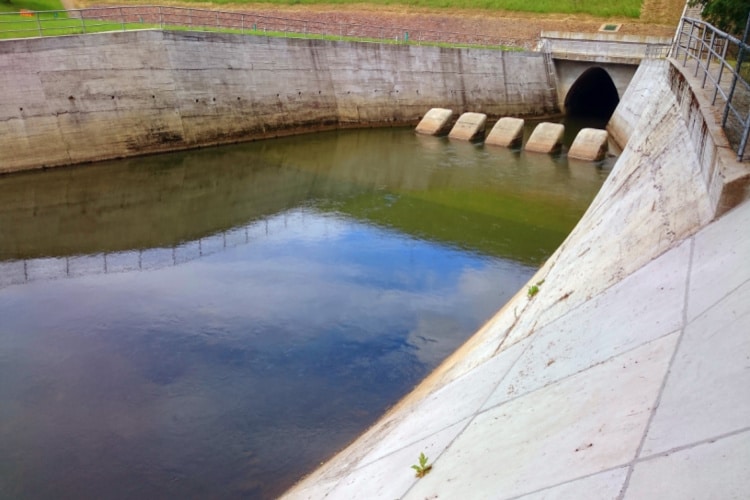
In turn, this disruption may result in a change in water pressure which, as we said, will dislodge rust and other impurities in the water pipes.
Poor water quality is another issue that may occur as a result of changing water source. The new water source may contain contaminants like iron, lead, zinc and copper. These contaminants are known to affect the taste and color of water.
5. Corroded Faucets
Most manufacturers use corrosion-resistant materials like stainless steel, brass, and zinc alloys when making faucets. However, when used for years, the interior parts of the faucets can wear away, causing the corroded parts to mix with water as it flows through the faucet.
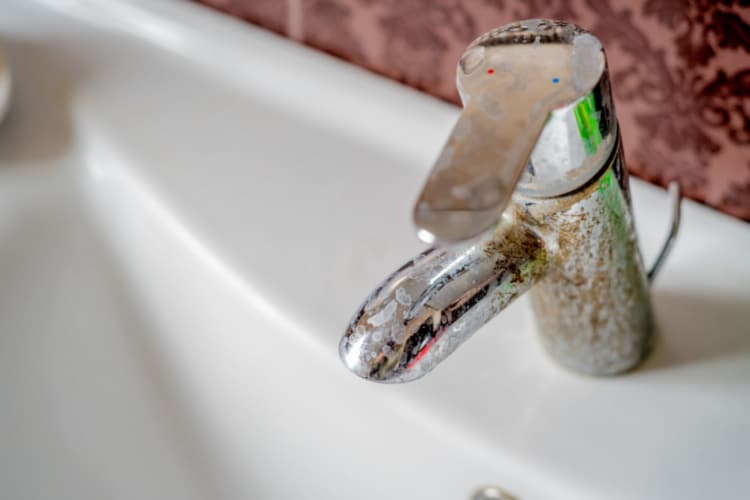
How to fix corroded faucets:
Corroded faucets are the easiest to fix. Try flushing them with high water pressure to dislodge the corrosion.
Alternatively, use undiluted white vinegar to clean the faucets. The vinegar will dissolve all residues. Next, turn the taps to flush to flush our residue.
The last option is to completely replace the faucets.
6. Burst Pipes Can Change Water Color
Pipes sometimes burst as a result of natural disasters, accidents, or heavy corrosion. If a pipe bursts, contaminants and sediments that might discolor the water will easily enter the water pipes.
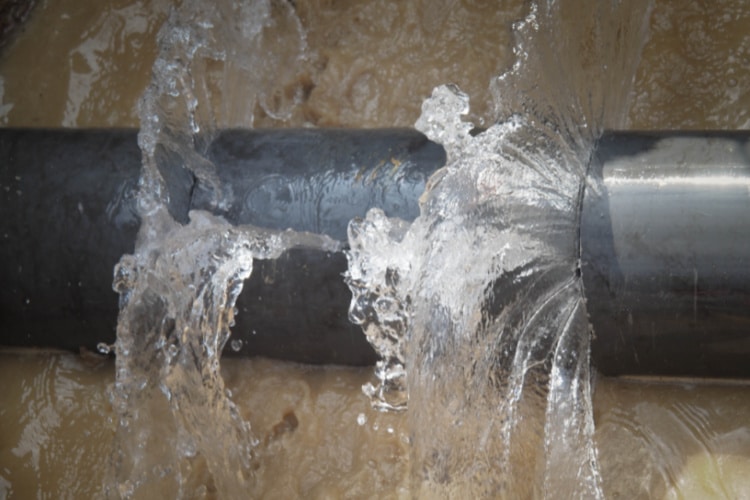
However, unlike rust, contaminants that are introduced to water through burst pipes can cause serious health issues since we have no way of knowing what they are without a proper water test.
Solution to burst pipes:
Check and seal-up bursted pipes.
7. Fire Hydrant Use Can Cause Water Discoloration
During emergencies, the fire department may resort to using fire hydrants that happen to be nearby. Fire hydrants usually require large volumes of water at high pressure.
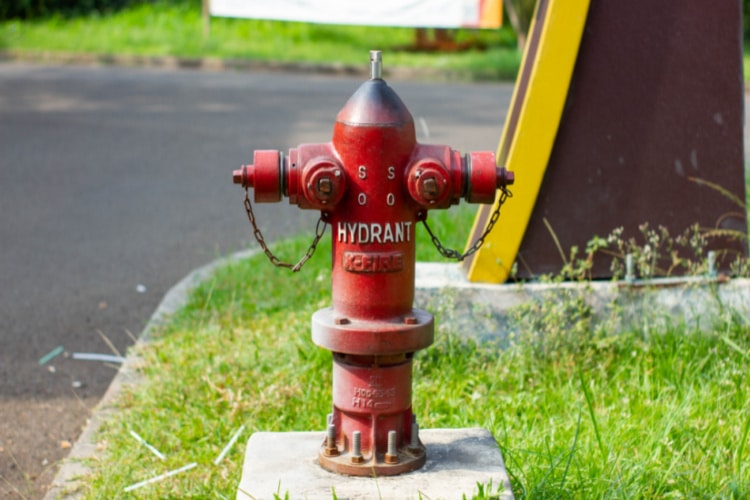
That essentially brings us to the same issue we discussed before, yet again—fluctuations in water pressure that result in dislodged rust and other sediments in the piping. As we said, this commonly results in yellow tap water.
Solution to fire hydrant use:
After fire hydrant use, let the water run through taps for about twenty minutes to dislodge sediments that may still be in the pipes. Your water should return back to normal after this.
How To Get Rid of Yellow Water
Here are detailed steps to help you get back to the clear and crisp water.
Step 1: Locate the Source of the Yellow Water
First, contact your water supplier to find out whether there has been any pipe maintenance or replacement, a change in water source, or a firefighting emergency.
If none of these are the cause, compare hot and cold water coming from the taps. If only the hot water is discolored, then the source is likely to be a rusty water heater. On the other hand, if the cold water is colored, your pipes, taps, or faucets could be the problem.
If it’s your faucets, check all of them one by one. Water from the corroded taps will have yellow discoloration.
In the event that all your faucets are okay after all prior troubleshooting, but you’re still seeing yellow water, you could be dealing with rusty pipes. Call a professional plumber to assess your pipes.
Step 2: Choose a Solution Based on Your Findings
After pinpointing the source, it’s time to find the ideal solution. You can:
- Replace the rusty pipes
- Flush your water heater
- Clean or replace corroded faucets
- Check and seal-up bursted pipes
- Check in with your municipal water authority
Step 3: Implement the Solution and Check for Clean Water
Having implemented a solution, the next step is to conduct a water test. You can either do it by yourself using a water testing kit, or you can contact the local health department for home water testing.
As a side note, it’s also a good idea to regularly test your water even if it isn’t necessarily discolored. Water that looks clear doesn’t always mean that it’s safe for drinking.
Frequently Asked Questions
As with tap water, the yellow color in bath water is also likely due to rust. When the iron in the pipes gets into contact with oxygen in water, it reacts through oxidation and forms rust.
When there’s a high accumulation of rust in the plumbing system, the bath water will have a yellowish tinge. Other causes include rusty water heaters, corroded faucets, and contaminated water from your water supplier.
For small tasks such as cleaning corroded faucets or replacing them, expect to pay $120 to $300.
The cost of completely replacing old rusty pipes will vary between $2,000 to $15,000, depending on the preferred material. Expenses might be higher depending on pipe location, the number of pipes, and how many bathroom or kitchen your house has.
If the yellow tinge is due to a change in water source, repairs of main pipes, or a recent flush of the main lines, it should go away naturally. So, in such cases, it’s best to leave faucets running for a while to clear all the residue.
If your pipes or water heater are rusty, the rust will clear itself once you replace the pipes or flush the heater.
Yellow water in your home plumbing system should go away in about five to 10 minutes or less once a solution is in place. However, the time span may vary depending on the cause of the discoloration.
If there’s maintenance or repair work, a burst pipe, or an emergency, it’ll persist until the supplier takes care of the issue or the emergency situation is handled. When there is a change in the water source, on the other hand, it might take more than a day for the water to clear.
Yellow water resulting from rusty pipes is safe to drink. Rusting occurs naturally within iron pipes, and the water stemming from it is typically safe for household use.
However, it’s advisable to know what materials your pipes are made of. If it’s copper or lead, the water shouldn’t be consumed at all.
If you’re sure the yellow water comes from the main pipes or the source, you shouldn’t drink it either. Instead, contact your suppliers to learn more.
Bathing in yellow water is safe as long as it’s due to rust. Even if there’s lead or copper in the water, human skin doesn’t absorb these metals, according to the EPA. However, it’s also common sense that water that’s already dirty may not be ideal for cleaning your body.
If the yellow water is from the water source or if there’s a burst pipe, on the other hand, it’s best to call the supplier to learn about the cause and safety levels.
A water softener can cause yellow water if yellow salt is used in it. Yellow salt can react with water and can cause discoloration.
Moreover, a new water softener resin, especially if it’s a low-quality one, can result in the same issue, but the problem should go away after a couple of regenerations.
Dealing with yellow water from the tap can be concerning, but this blog post provides helpful information on the possible causes and solutions. From discussing the presence of minerals to plumbing issues, it offers practical tips on how to address the problem and improve water quality. Thanks to the author for shedding light on this issue and providing valuable guidance for those experiencing yellow water in their homes.